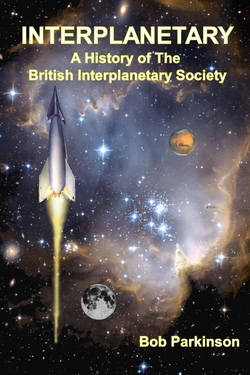Centauri Dreams
Imagining and Planning Interstellar Exploration
Robot at 100
If biological life gives way to its own creations, should we adjust our SETI outlook to include entire civilizations composed of artificial intelligences? A postbiological culture was certainly on the mind of the Czech writer Karel ?apek (1890-1938), whose work is the subject of today’s essay by Milan ?irkovi?. It’s a good time to reassess this author as we careen toward what may or may not be a ‘singularity,’ when digital intelligence eclipses our own. As ?irkovi? explains, ?apek was an utterly indefatigable writer whose work is less well known in the west than it should be given its significance not only to science fiction but the study of the future. Dr. ?irkovi? is a research professor at the Astronomical Observatory of Belgrade, the author of numerous research and professional papers as well as three research monographs and four books, the most recent of which is The Great Silence: The Science and Philosophy of Fermi’s Paradox (Oxford University Press). Read on to learn about the life and work of a key figure in our conception of the human, and post-human, future.
by Milan ?irkovi?

This year marks a century since the world premiere of Karel ?apek’s drama R.U.R. in the town of Hradec Králové in the Czech Republic. By that very fact, it marks a century of the word “robot” which has spread into all world languages from the very title of ?apek’s drama, since the latter is an initialism standing for Rossumovi Univerzální Roboti in the Czech original (meaning Rossum’s Universal Robots). It is the name of the megacorporation responsible for introduction of robots as a cheap and versatile workforce, and – no big spoiler there, considering how famous and even canonical the drama has become – ultimately responsible for the extinction of the human species.
According to an interview given to a Czech newspaper more than a decade later, the true creator of the word was Karel’s brother, Josef, a talented painter and poet. While Karel could not decide what to call artificial people, Josef (who lived with him at the time) suggested the work “robot” coming from robota, meaning hard work, usually done involuntary in serfdom. A similar word, denoting labour or hard work, is present in all Slavic languages (e.g., “??????” in Ukrainian, “rabota” in Serbian and Croatian, etc.). Formally, of course, one could argue that the word was coined in 1920, when the drama was written, and Karel’s conversation with Josef took place, but the neologism began to spread only after the premiere in 1921.

R.U.R. is arguably still the most important and the best written science fiction play ever. It is far from being ?apek’s only claim to fame, however. On the contrary, he was extremely, unbelievably, fantastically prolific for a man of lifelong poor health who died at 48. He wrote a dozen novels, hundreds of short stories in all genres, a book on gardening, 5 books of letters describing various travels all over Europe, children books, literally thousands of newspaper articles, essays, vignettes, and Borges-like “apocrypha”. His novels, both realistic (Hordubal, Meteor, Ordinary Life, Life and Work of the Composer Foltýn) and SF (Krakatit, The Absolute at Large, and his most significant work, War with the Newts) are all very complex affairs, full of difficult philosophical and psychological ideas, but also mostly ironic and often spiced with Monty-Pythonesque black humor.
His work was extraordinary popular all across Europe between the world wars, especially among people of the Enlightenment tradition, frightened by the rise of mass-murdering totalitarianism in Italy, Germany, and the Soviet Union. He was repeatedly nominated for the Nobel Prize in literature, but according to the since uncovered documents, his fierce anti-totalitarian stance made him a politically undesirable laureate for the (always politically shy) Swedish academy. A self-identified radical centrist, ?apek viscerally hated nationalism and nationalism-inspired tyrranies, such as those of Mussolini and Hitler, and he openly mocked the latter’s pretensions in War with the Newts; he also deeply despised communism and called it the surest road to total economic and cultural impoverishment.
The Munich Agreement, signed on September 30, 1938, effectively enabled the destruction of Czechoslovakia by the Nazis, first by cessation of the so-called Sudetenland, and subsequently by occupation of the rest of the country by March 15, 1939. The occupation was followed by immediate imposition of all the measures of totalitarian terror, destruction of Czech institutions and culture, bloody purges, arrests, deportations, etc. ?apek was perhaps fortunate not to be able to see such a horrible denouement; he died on December 25, 1938, apparently a consequence of a sudden heart attack while working in his garden. By a dark irony worthy of Kafka, or indeed ?apek himself, the Nazi occupiers ordered his arrest and transfer to a concentration camp a few months later, while unaware (“an administrative error”) that he was already deceased. Josef ?apek was arrested and later murdered in the infamous Bergen-Belsen concentration camp.
To return to R.U.R., there is some debate on the proper conceptualization of ?apek’s robots. The author himself contributed to this, since he maintained a kind of delightful ambiguity between the “natural” and the “artificial”, which was a kind of philosophical point with him. In a subsequent letter, whose English translation was published in Science Fiction Studies, he insisted on biological substrate as the basis of his androids, imagined as “biological machines”, rather than the metallic creations we continue to associate with the concept of a machine.
In the final analysis, the nature of the substratum is irrelevant: even if we did not know it in the 1920s, we are confident now that life is just biochemical machinery of high complexity. Just a couple of years after ?apek’s drama had its world premiere, the first serious hypotheses about the origin of life in a completely naturalistic manner were put forward by Alexander I. Oparin and John B. S. Haldane. They were considered speculative (if not, ironically, more science fiction than science) until, a few decades later, when an ambitious graduate student named Stanley Miller and his mentor Harold Urey performed what was perhaps the most spectacular and most important experiment of the 20th century. In the analog simulation of Earth’s early, reducing atmosphere, Miller and Urey achieved synthesis of many organic compounds, including vital amino acids (and many more were discovered decades later in the original samples by Miller’s student Jeffrey Bada). This and many subsequent developments in the abiogenesis studies showed how easy abiogenesis probably is in the realistic situations where many millions of years and huge spatial volumes/surface areas are available. Therefore, even the “rare Earth” theorists have consistently argued that simple life is probably ubiquitous throughout the universe. And from the information view of life, the substrate is positively irrelevant.
Obviously, the heritage of R.U.R. is not all roses – after all, bots of internet infamy are just a shortening of robots. And while the robot rebellion is unlikely to take such a melodramatic form as in ?apek’s drama, the threat of making humans irrelevant in the work market or even entirely superfluous looms large. Ultimately, all worries about the AI risk, as elaborated in such a brilliant book as Nick Bostrom’s Superintelligence, follow from the apocalyptic vision of R.U.R. and its prototypical Robot Rebelion.

The drama is highly relevant today for some additional reasons, however, notably for study of the future as well as the astrobiology/SETI field. It offers a first glimpse of postbiological evolution, which is likely to be the dominant form of evolution in the universe in the fullness of time, as suggested, since about the turn of the century, by diverse authors such as Steven J. Dick, John Smart, Juan Chela-Flores, Anders Sandberg, Abraham Loeb, Joseph Voros, and others. Until we accept the (transhumanist?) premise that the design space of postbiological evolution is much larger still than the design space of the good ol’ biological one, our way of conceptualizing searches for bio- and especially technosignatures will be seriously limited.
Image: A first edition of the play, with cover designed by Josef ?apek. Aventinum, Prague, 1920. Credit: Wikimedia Commons.
Perhaps the most valuable legacy of R.U.R. is, in fact, its thought-provoking ethical ambiguity, which clearly follows from ?apek’s wedding of a deeply understood evolutionary perspective with his unquenchable humanism. Superficially, it’s an unsolvable dilemma: if one understands evolution, one has to admit that humans and all their creations are emergent, but ephemeral, accidents. Humans are mammals; all mammal species last a couple of million years before going extinct. On the opposite side, humanism tells us that our creations and values carry a spark of persistence, if not true immortality.
A solution, as ?apek powerfully intuited, is a kind of postbiological evolution. If present-day humans become obsolete, the process undoubtedly quickened by our many flaws, this need not mean that our creations cannot and indeed ought not succeed us. Technically speaking, ?apek’s robots commit the ultimate genocide – and yet, strangely enough, we do not feel offended or enraged by such a turn of events (neither does the last surviving human protagonist of the drama, who helps the robots with procreation). Something new and wonderful is happening in the universe.

Deep Space Network: A Laser Communications Future
Recent updates to the Deep Space Network have me thinking about the data capabilities of laser communications, and how they will change the way missions operate. In late October, a payload called the Laser Communications Relay Demonstration (LCRD) is scheduled for launch aboard an Atlas V from Cape Canaveral. LCRD will begin its work by receiving radio frequency test signals from the mission operations center and responding with optical signals. Ultimately, the mission should be able to receive data from other missions and relay to the ground.
What we have here is NASA’s first technology demonstration of a two-way laser relay system, one that will test laser capabilities to find out, for example, about the potentially disruptive effect of clouds. Because optical signals cannot penetrate them, plans are for LCRD to transmit data from missions to separate ground stations, one in Table Mountain, California and the other at Haleakal? in Hawaii, both chosen because of their low degree of annual cloud coverage.
Also slated for late 2021 is the Terabyte Infrared Delivery (TBIRD) mission, which will demonstrate laser downlinks of 200 gigabits per second, again enlarging the agency’s capabilities at designing laser systems for small satellites.
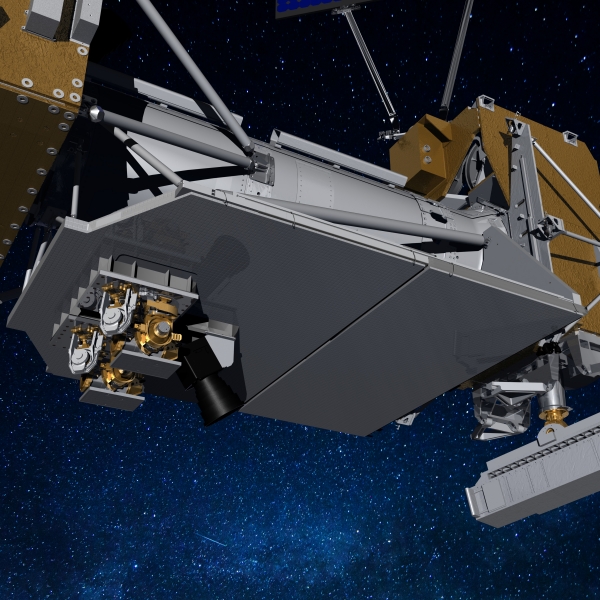
Image: The Laser Communications Relay Demonstration payload is attached to the LCRD Support Assembly Flight (LSAF), which can be seen in this image. The LSAF serves as the backbone for the LCRD components. Attached to the LSAF are the two optical modules, which generate the infrared lasers that transmit data to and from Earth. A star tracker is also attached here. These components are visible on the left side of this image. Other LCRD components, such as the modems that encode data into laser signals, are attached to the back of the LSAF. Credit: Goddard Space Flight Center.
All of this is by way of looking at how communications are evolving, and how capacity must grow with technology, for the 39 missions the Deep Space Network regularly supports are scheduled to be joined by another 30 NASA missions in development. The network’s tracking antennas are found at Goldstone (near Barstow, CA), in Robledo de Chavela, Spain; and in Canberra, Australia. Two new antennas have added capacity, taking the DSN from 12 to 14. You can track ongoing operations on the DSN on this mesmerizing page.
You’ll recall the issues with DSS-43, the 70-meter DSN antenna at Canberra (see Voyager 2: Back in Two-Way Communication). This is the only southern hemisphere dish with a transmitter in the needed S-band frequency range and powerful enough to send commands to Voyager 2, and it took 11 months of upgrades to resolve problems with its aging equipment. Voyager 1 is able to communicate through the two northern hemisphere DSN stations, but Voyager 2’s course following the Neptune encounter in 1989 was pushed well south of the ecliptic.
JPL’s Brad Arnold is manager of the Deep Space Network:
“The refresh of DSS-43 was a huge accomplishment, and we’re on our way to take care of the next two 70-meter antennas in Goldstone and Madrid. And we’ve continued to deliver new antennas to address growing demand – all during COVID-19.”
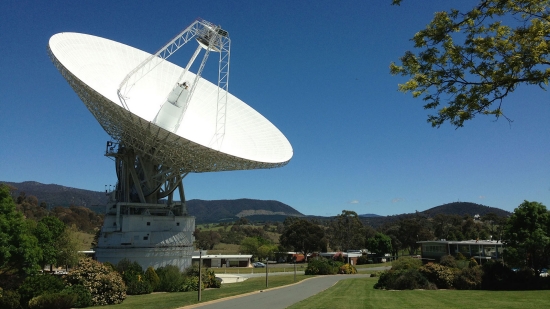
Image: DSS43 is a 70-meter-wide (230-feet-wide) radio antenna at the Deep Space Network’s Canberra facility in Australia. It is the only antenna that can send commands to the Voyager 2 spacecraft. Credit: NASA/Canberra Deep Space Communication Complex.
The upgrades are occurring at a time when data flowing through the network has grown by a factor of 10 since the 1960s, with the prospect of much higher data volumes to come. Hence the interest in optical strategies to enable higher-bandwidth communication. Improvements in automation allow operators to oversee multiple links to spacecraft simultaneously, so the sequencing and execution of tracking passes can be fully automated. While waiting for optical methods to mature, the network is also using new protocols for the reception of multiple signals from a single antenna, splitting them in a digital receiver as a way to boost network efficiency.
When it comes to the data overload problem, laser communication is the next step, and the groundwork has continued during the past decade. In 2013, the Lunar Laser Communications Demonstration (LLCD) used a laser signal to enable fast upload and download rates (600 megabits per second) on two simultaneous high-definition video channels. LLCD was followed in 2014 by the Optical Payload for Lasercomm Science (OPALS) experiment, a demonstration onboard the International Space Station. 2017 saw the Optical Communications and Sensor Demonstration mission (OCSD), in which high-speed laser communications were demonstrated via downlink from a CubeSat to ground stations.
Meanwhile, we can look forward to the Psyche mission, scheduled for launch in 2022, in which the onboard Deep Space Optical Communications (DSOC) payload will test laser communications in a mission to an asteroid 240 million kilometers away.
We get serious advantages not just in terms of bandwidth but also in transmission and reception of signals by going this route. The diffraction rate of a radio signal is determined by the wavelength of the signal divided by the diameter of the antenna. Push into higher frequency ranges and the signal becomes narrower, offering advantages in a crowded spectrum. The DSS-43 communications with Voyager 2 make the issues stark. Because of beam diffraction, the Voyager signal now swells to over a thousand times the diameter of the Earth.
Putting this into more futuristic terms: A 20-watt laser signal beamed back to Earth from Alpha Centauri via an installation about the size of the Hubble Space Telescope would reach us. Our current capabilities extend out into the Kuiper Belt, but star-to-star is out of the question. Back in 1989, the signal we received from Voyager 2’s 23 watts was twenty billion times weaker than the power it would take to operate a digital wristwatch, yet the DSN could pluck the signal out of deep space to deliver the data. If we had a Voyager 2 entering Alpha Centauri space, its signal would be 81 million times weaker than that. Going interstellar means going to lasers.
And beyond that? Claudio Maccone has demonstrated mathematically what might be done with a communications relay at the Sun’s gravitational focus beyond 550 AU. Going more futuristic still, a network of interstellar communications could one day grow from similarly placed relays around nearby stars. The efficiencies of a network like that — if we can find a way to put one in place — are breathtaking. See The FOCAL Radio Bridge for more.
On the laser signal at Alpha Centauri, see Lesh, C. J. Ruggier, and R. J. Cesarone, “Space Communications Technologies for Interstellar Missions,” Journal of the British Interplanetary Society 49 (1996): 7–14. For more on gravitational lensing and communications, see Maccone, “Interstellar Radio Links Enhanced by Exploiting the Sun as a Gravitational Lens,” Acta Astronautica Vol. 68, Issues 1-2 (January-February 2011), pp. 76-84 (abstract/full text).

Odd Find: An Ancient Brown Dwarf?
The brown dwarf WISEA J153429.75-104303.3 — happily nicknamed ‘The Accident’ — is peculiar enough that it may point to a rare population of extremely old brown dwarfs. Dan Caselden, a citizen scientist who built an online program to filter data from the NEOWISE spacecraft, is able to highlight brown dwarfs moving through the NEOWISE field with his software, and while looking at one, he caught a glimpse of another. Call that a lucky catch, because the object didn’t match his program’s profile of a conventional brown dwarf.
We’ve found about 2,000 brown dwarfs thus far, many using data from WISE — Wide Field Infrared Survey Explorer — which was launched in 2009, placed into hibernation in 2011 after its primary mission ended, and then reactivated in 2013 as NEOWISE, a repurposed spacecraft given the new goal of tracking near-Earth objects. WISE 1534?1043 — the shortened name of the object, used by the authors of a new paper on it — stands out from all previously known brown dwarfs because it seems to have very little methane, unlike the brown dwarfs we’re familiar with, among which methane is common at WISE 1534?1043’s temperatures.
What we may be looking at is the signature of an extremely old, and cold, brown dwarf that emerged at a time when the galaxy was low enough in carbon that little methane could form in its atmosphere. That’s the thesis of the paper in Astrophysical Journal Letters, whose lead author is Davy Kirkpatrick (Caltech). The authors believe WISE 1534?1043 may be between 10 and 13 billion years old, making it double the median age of known brown dwarfs.
Adding punch to the hypothesis is the fact that, at about 50 light years from Earth, WISE 1534?1043 is moving much faster — well over 200 kilometers per second — than any other brown dwarf at a comparable distance. This may imply gravitational acceleration from encounters sustained in a long, long lifetime. If one such ancient brown dwarf is out there, we should find others.
Co-author Federico Marocco (Caltech) led the new observations of WISE 1534?1043, which extend earlier studies of the object, using the Keck and Hubble instruments:
“It’s not a surprise to find a brown dwarf this old, but it is a surprise to find one in our backyard. We expected that brown dwarfs this old exist, but we also expected them to be incredibly rare. The chance of finding one so close to the solar system could be a lucky coincidence, or it tells us that they’re more common than we thought.”

Image: This video shows data from NASA’s Near-Earth Object Wide-Field Infrared Survey Explorer (NEOWISE), launched in 2009 under the moniker WISE. The moving object in the bottom left corner is a brown dwarf officially named WISEA J153429.75-104303.3 and nicknamed “The Accident.” Credit: NASA/JPL-Caltech/Dan Caselden.
This unusual object is too faint at all wavelengths, the paper notes, for spectroscopy to be used at any current facility. Thus the interpretations given in the Kirkpatrick paper rely on trends found among other better known objects extended “into a terra incognita guided by theoretical predictions.” In addition to the idea that it is an extremely old brown dwarf with the low metallicity of its origins in a young galaxy, the authors examine other possibilities.
Are we actually dealing with an extremely low mass young brown dwarf? Evidently not, as the methane deficiency is hard to reconcile with this option. Could WISE 1534?1043 be an ejected exoplanet? Here we need atmospheric data, which we don’t have, to examine the elements therein, knowing that giant planets in our Solar System are more metal rich than the Sun (carbon is enhanced in Jupiter by three times the amount found in the Sun, and more so in Saturn, Uranus and Neptune). Thus we would have a marker, if we could find it. From the paper:
Under this hypothesis, WISE 1534?1043 is photometrically unusual because such elemental differences would profoundly affect its atmospheric composition and emergent spectrum. Unfortunately, forward modeling that incorporates a wide array of elemental abundance differences does not yet exist, so our best method to test this hypothesis is atmospheric retrieval, once a suitable spectrum for WISE 1534?1043 is obtained.
A final possibility is an ultracold stellar remnant, meaning a white dwarf, but this explanation falls short due to models showing a white dwarf could not have cooled to these temperatures within the lifetime of the Milky Way. Thus only one conclusion seems likely:
We conclude that the unique object WISE 1534?1043 is most likely a cold, very metal-poor brown dwarf—perhaps even the first Y-type subdwarf…
But note this:
Verification, refutation, or further befuddlement should be possible via additional photometry and broad-wavelength spectroscopy from the James Webb Space Telescope.
‘Further befuddlement’ indeed! An honest comment about an extremely unusual object.
The paper is Kirkpatrick et al., “The Enigmatic Brown Dwarf WISEA J153429.75-104303.3 (a.k.a. “The Accident”),” Astrophysical Journal Letters Vol. 915, No. 1 (30 June 2021), L6 (abstract / full text).

Exoplanets Found to be Plentiful in the Galactic Bulge
I mentioned yesterday that we are just opening up the discovery space when it comes to exoplanets. It’s an obvious observation for those who follow these things, but I suspect most casual observers don’t realize that almost all the planetary systems we’ve found thus far are located relatively close to the Sun, almost always within no more than a few thousand light years. Most of the stars the Kepler mission observed in Cygnus, Lyra and Draco were about the same distance from galactic center as the Earth. The average distance to the target stars of this most productive of all exoplanet missions yet was 600 to 3,000 light years.
Kepler, like TESS, worked by studying the transits of planets across their host stars, and in Kepler’s case, the method was unable to detect transits at distances any larger than these. In fact, we have only one method that can detect exoplanets at a wide range of distances in the Milky Way, and that is gravitational microlensing, which can take us into the galactic bulge. Here the planet is detected during an occultation, with its host star moving in front of a far more distant star. The pattern of gravitational lensing this produces reveals the closer star’s planet.
But these are one-off observations, not something like a transit that can be seen with regularity. Moreover, while gravitational microlensing offers a priceless chance to find planets tens of thousands of parsecs from the Sun, its utility has been somewhat compromised by the difficulty in assessing stellar distances at ranges more than 10,000 light years out. A new study in Astrophysical Journal Letters is just out that examines the issue, homing in on the relative motion of the lens and the more distance source of light that is being occulted.
Running actual microlensing events against a model of galactic motion, a team led by Naoki Koshimoto infers the galactic distribution of planets. We learn that distance from galactic center does not produce a change in planetary distribution even in the galactic bulge. This is an intriguing result, for one might think that circumstellar disk materials would be more plentiful in areas where the density of stars is as high as in the bulge, affecting a star’s content of metals. Other factors might be the intensity of radiation in high-population areas or the likelihood of differences in the number of multiple star systems.But Koshimoto finds planets everywhere:
“Stars in the bulge region are older and are located much closer to each other than stars in the solar neighborhood. Our finding that planets reside in both these stellar environments could lead to an improved understanding of how planets form and the history of planet formation in the Milky Way.”
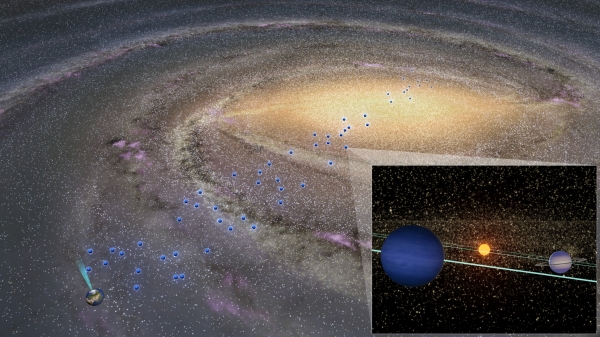
Image: An artist’s conception of cold planet distribution throughout the Milky Way. For comparison, the cyan cone is the Kepler transit survey field. The inset shows an artistic conception of a planetary system in the galactic bulge. Credit: Osaka University.
The researchers build their analysis around a number of observed microlensing events. One factor involved in the Osaka study is the Einstein radius crossing time, which measures the lensing event as host planet and star occult the more distant object. An Einstein ring is the lens effect as light is curved by mass during the occultation (in a perfectly aligned event, the light would appear as a ring). The researchers also measured the proper motion of the lens source, meaning the star (and planet) passing in front of the distant star and bending its light.
The authors estimate planet hosting probabilities by comparing data on the proper motion in some 28 observed microlensing events with what is predicted by their own galactic model, allowing them to estimate “for the first time the dependence of the planet-hosting probability on the Galactocentric distance.” Their model includes planet-hosting probability and considers stellar mass, velocity and density distribution for randomly selected stars. The model draws on Gaia data and a range of astronomical projects building data on stellar motion and velocity.
Needless to say, everything rides on this model, and the calculations that produced it are laid out in all their complexity in the paper. Dissecting the model is a clear path forward for subsequent research into the question of planets in the galactic bulge. But I want to cut to the chase, given the novelty of having this kind of assessment of exoplanet distribution on a galactic level. Noting that the galactic bulge has a stellar density on the order of 10 or more times greater than the neighborhood of the Sun, and that its star population is older, the paper notes the tentative result that location in the galaxy does not change the frequency of planets.
With a nod to earlier research that has suggested otherwise, they add this:
Observations of the solar neighborhood have shown that there is a correlation between stellar metallicity and the occurrence of giant planets…, and have also suggested that close encounters with other stars may affect the evolution of planetary systems… Therefore, due to the abovementioned environmental differences, the planet frequency in the bulge may differ significantly from that in the solar neighborhood. Although our results are still inconclusive, they might imply that cold planets orbiting beyond the H2O snow line also commonly exist in the bulge region regardless of such differences.
Or, to state the matter more directly:
One of the largest uncertainties when comparing the exoplanet population discovered via other exoplanet detection methods with microlensing planets is a possible large dependence of the planet frequency on Galactic location. Our results show that such a dependence is not very large, and one might be able to compare them without considering the difference in Galactic location.
Bear in mind the context here. A 2016 paper from Matthew Penny (Louisiana State University) and colleagues has suggested, based on published microlensing data and a different galactic model, that the galactic bulge could be devoid of planets. Koshimoto and team reject this work on the basis of “an inhomogeneous sample and incorrect microlens parallax measurements,” but it’s a measure of how little we know about planets in the inner regions of the galaxy that early papers like these should reach such profoundly different conclusions.
The paper is Koshimoto et al., “No Large Dependence of Planet Frequency on Galactocentric Distance,” Astrophysical Journal Letters Vol. 918, No. 1 (26 August 2021), L8 (abstract / preprint). The Penny paper is “Is the Galactic Bulge Devoid of Planets?” Astrophysical Journal Vol. 830, No. 2 (19 October 2016), 150 (abstract).

Into the Brown Dwarf Desert
It’s a measure of how common exoplanet detection has become that I can’t even remember the identity of the object I’m about to describe. Back in the early days (which means not long after the first main sequence detection, the planet at 51 Pegasi), I was at a small dinner gathering talking informally about how you find these objects. A gas giant was in the news, another new world, or was it really a brown dwarf? And just what was a brown dwarf in the first place? Back then, with just a handful of known exoplanets, introducing the idea of a brown dwarf raised a lot of questions.
Now, of course, we have planets in the thousands and are just opening up the discovery space. Brown dwarfs are plentiful, with some estimates at one brown dwarf for every six main sequence stars. A 2017 analysis of a cluster called RCW 38 by Koraljka Muzic and team concluded that the galaxy contains between 25 and 100 billion brown dwarfs. So we have plenty to work with as we home in on the still controversial borderline between planet and brown dwarf, as well as between brown dwarf and star.
We know that brown dwarfs are not massive enough to support hydrogen fusion but do fuse small amounts of deuterium, an isotope of hydrogen whose nucleus holds one proton and one neutron. The contrast could not be more stark: Low-mass M-class stars can burn hydrogen for tens of billions of years, with longevity far beyond that of our Sun. Brown dwarfs keep getting cooler after going through a short period of deuterium burning. The problem is that only about 30 brown dwarfs have been accurately characterized, as University of Geneva researcher Nolan Grieves points out.
“…we still do not know exactly where the mass limits of brown dwarfs lie, limits that allow them to be distinguished from low-mass stars that can burn hydrogen for many billions of years, whereas a brown dwarf will have a short burning stage and then a colder life. These limits vary depending on the chemical composition of the brown dwarf, for example, or the way it formed, as well as its initial radius.”
The scholarship on brown dwarf mass generally sets a limit of 13 Jupiter masses (MJup) as the dividing line between a gas giant and a brown dwarf. This is the approximate mass that an object must reach to ignite deuterium fusion in its core. The upper limit, dividing brown dwarf from star, has been commonly set at 80 Jupiter masses, which is where the object is massive enough to begin hydrogen burning, fusing hydrogen nuclei into helium nuclei. Exactly where these boundaries occur, though, depends on the chemical composition of the particular object in question.
Thus the value of the work Grieves and team have produced, a study of five brown dwarfs that were found in TESS data through their transit signature and later analyzed using radial velocity methods. They are ‘companion’ objects, as opposed to unbound brown dwarfs. All are near the hydrogen-burning mass limit. Their main sequence host stars were originally identified as TESS Objects of Interest (TOI), and the companions orbit with periods ranging between 5 and 27 days. Because they transit, we can also detect their radii, between 0.81 and 1.66 times Jupiter’s radius. They range in mass between 77 and 98 Jupiter masses, which nudges them into M-dwarf territory.
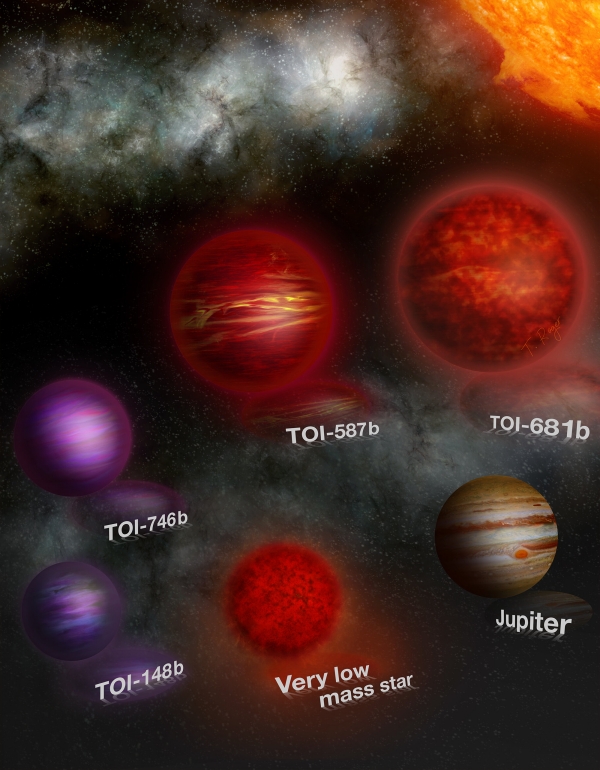
Image: This artist’s illustration represents the five brown dwarfs discovered with the satellite TESS. These objects are all in close orbits of 5-27 days (at least 3 times closer than Mercury is to the Sun) around their much larger host stars. Credit: CC BY-NC-SA 4.0 – Thibaut Roger – UNIGE.
Are we sure these detections are not of very low mass stars? One way of approaching the matter is to look at the relationship between their size and age. A brown dwarf will lose deuterium as it burns up its reserves, thus cooling down and shrinking over time. The fact that the two oldest TESS Objects of Interest — TOI 148 and TOI 746 — have smaller radii while the younger objects are larger points to the likelihood that the former are brown dwarfs.
These age estimates are based, in the case of the comparatively young TOI-587, on what is known as ‘isochrone stellar modelling,’ which essentially fits data onto the Hertzsprung-Russell diagram to draw conclusions about the ages of stars in clusters. The young age of TOI-681 is likewise drawn from inferences due to its membership in a cluster. But even these rough estimates are compromised by the fact that TOI-681b makes only a grazing transit, as does another of the TESS finds, TOI-1213b.
I mention the age issue as just one factor in working out the nature of these objects, and one that is itself not well constrained. Given the uncertainties, the authors’ conclusion points to the need to compile a larger dataset for brown dwarfs:
The sample of transiting brown dwarfs and low-mass stars we analyzed is still too small to make significant statistical claims; however, their eccentricity and metallicity distributions are still consistent with previous suggestions of two separate populations for lower and higher mass brown dwarfs. These companions are all near the hydrogen-burning mass limit and add to the statistical sample needed to distinguish the population differences between brown dwarfs and low-mass stars.
Note that comment on two separate populations of brown dwarfs depending upon mass. We’re just getting a handle on these issues. The questions that hovered over my post-dinner conversation on brown dwarfs back in the 1990s continue to vex astronomers as we probe this class. Defining separate populations for these objects seems to be where we’re headed as we craft formation models.
Bear this in mind: Brown dwarfs rarely occur in close orbits around main sequence stars, the word ‘close’ in this case meaning orbits at 5 AU or closer to the primary. Thus the phrase ‘brown dwarf desert’ to characterize orbits that brown dwarfs rarely occupy as a companion object. The authors think this lack of brown dwarf companions relates to formation mechanisms, though the jury is out:
The relative lack of brown dwarf companions may be related to a transition of the formation mechanisms required to form giant planets and low-mass stars. In this case, lower mass brown dwarfs may form similar to giant planets via core accretion (Pollack et al. 1996) or disk instability (Cameron 1978; Boss 1997) and higher mass brown dwarfs may form similar to stars from gravitational collapse and turbulent fragmentation of molecular clouds (Padoan & Nordlund 2004; Hennebelle & Chabrier 2008). The boundary of these formation mechanisms is unclear and certainly depends on an object’s initial environment.
Brown dwarfs that can be well characterized are the key to resolving these issues, especially those whose radius can be precisely determined, as in the new TESS discoveries. Here we have the kind of robust photometric and spectroscopic measurements that will help astronomers test current formation models.
The paper is Grieves et al., “Populating the brown dwarf and stellar boundary: Five stars with transiting companions near the hydrogen-burning mass limit, Astronomy & Astrophysics Vol. 652, A127 (August, 2021). Abstract / Preprint.

‘Hycean’ Worlds: A New Candidate for Biosignatures?
We’ve just seen the coinage of a new word that denotes an entirely novel category of planets. Out of research at the University of Cambridge comes a paper on a subset of habitable worlds the scientists have dubbed ‘Hycean’ planets. These are hot, ocean-covered planets with habitable surface conditions under atmospheres rich in hydrogen. The authors believe they are more common than Earth-class worlds (although much depends upon their composition), and should offer considerable advantages when it comes to the detection of biosignatures.
Hycean worlds give us another habitable zone, this one taking in a larger region than the liquid water habitable zone we’ve always considered as the home to Earth. In every respect they challenge our categories. Not so long ago a Cambridge team led by Nikku Madhusudhan found that K2-18b, 2.6 times Earth’s radius and 8.6 times its mass, could maintain liquid water at habitable temperatures beneath its hydrogen atmosphere. The team has now generalized this work with a full investigation of the planetary and stellar properties making life possible on such planets.
Planets between the size of Earth and Neptune are thus far the most common type of planet we’ve found, generally being labeled as ‘super-Earths’ or ‘mini-Neptunes.’ There are no analogues to planets like this in the Solar System; they are classed as super-Earths or mini-Neptunes largely on the basis of their density as inferred by their mass and radius. Some may be predominantly rocky, while others are closer to the ice giants in our system. Some may be water worlds. Some of them are in the habitable zones of nearby M-dwarf stars, making them good candidates for atmospheric studies and possible biosignature detections.
For planets with a hydrogen atmosphere surrounding a layer of high-pressure water covering an inner core of rock and iron may become astrobiologically interesting. It’s true that too dense a hydrogen envelope would create temperature and pressure at the surface that would preclude life. But if the atmosphere is not too thick, life-sustaining temperatures can exist.
The Hycean planets thus represent a new category of potentially habitable worlds, and can be up to 2.6 times the size of Earth, with atmospheric temperatures up to 200 degrees Celsius, while still remaining habitable. They are defined not only by size but also by mass, temperature and atmospheric pressure. Conditions in their oceans may allow at least microbial life.
We are looking at a wide habitable zone as well. Its range takes in planets with orbital separations so large that the only energy source would be internal heat. It also extends to planets orbiting so close to the host star that they are tidally locked, but can support life on their dark sides. The span of possible temperatures allowing life to exist is thus substantial. About the tidally locked worlds the authors refer to as ‘Dark Hycean,’ for example, we learn this:
…we nominally consider the planet-wide average surface and atmospheric temperature to be 500 K. The choice of this temperature is motivated by the atmospheric models for nightsides of Dark Hycean planets…. In particular, we find that planets with equilibrium temperatures of ?510 K with inefficient day-night energy redistribution can lead to dayside temperatures of ?500-600 K but nightside surface temperatures ?400 K. Therefore, while a 510 K temperature is not considered to be habitable, it represents a planet wide average and still allows a nonnegligible fraction of the nightside ocean surface to be at habitable surface temperatures, i.e., below 400 K.

Image: Artist’s conception of the surface of a Hycean planet. Credit: Amanda Smith, Nikku Madhusudhan.
The researchers believe these interesting worlds are common. In their paper, they present a sample of potential Hycean targets that could be useful fodder for next-generation telescopes. All of these orbit red dwarf stars close enough to be suitable targets for the James Webb Space Telescope; none are more than 150 light years away. JWST observations of K2-18b are already being considered and could conceivably provide a biosignature detection. For having looked at five potential biomakers in Hycean atmospheres, the authors note:
Hycean atmospheres may offer even better opportunities for detecting these biomarkers than those of rocky super-earths… For a 10 M? planet, the Hycean radius range is ?2-2.6 R? compared to the super-Earth radius of 1.75 R? considered in Seager et al. (2013b). The increased radii and lower gravities lead to larger, more easily detectable spectral signatures for Hycean planets. Second, considering that prominent sources of the above biomarkers are thought to be aquatic microorganisms, we expect them to be even more abundant on Hycean worlds compared to predominantly rocky worlds.
The fact that Hycean planets open up the discovery space for worlds that could support life makes them noteworthy. We begin to consider planets of higher mass and radius than before, provided they have a rocky core that, according to the paper, is at least 10% of planetary mass and is of Earth-like composition. Their wide habitable zone expands the area for detection, while presenting a range of challenges that is likewise wide. Mass and radius help us spot a Hycean candidate, but they alone are not sufficient. We also need to learn more about temperatures and pressures in the ocean, and basic properties of the atmosphere:
,,,even if a candidate Hycean planet is in the Hycean HZ it may not necessarily have the right conditions for habitability, e.g., the internal structure and atmospheric properties may be such that the ocean surface pressure and/or temperature is too high… [T]he detection of H2O in the atmosphere does not guarantee the presence of an ocean on the planet, as H2O can be naturally occurring in H2-rich atmospheres as the prominent oxygen bearing species. Conversely, the nondetection of H2O does not preclude the presence of an ocean, since at low atmospheric temperatures H2O can rain out and not be detectable in the atmosphere. Nevertheless, in all these aspects Hycean candidates offer better prospects for establishing their habitability compared to habitable rocky exoplanets, which are inherently harder to characterize.
Given the wide range of transiting worlds we’ve discovered between 1 and 2.6 Earth radii, Hycean worlds offer no shortage of targets and if nothing else provide opportunities for atmospheric characterization that, according to the authors, should be less challenging than similar work on rocky exoplanets. Their large radius and thick atmospheres seem made to order for JWST and future instruments like the Extremely Large Telescope. Although not similar to Earth, Hycean planets can be valuable venues for detecting trace biosignatures. That alone contributes to the larger quest of finding life on planets more similar to our own.
The paper is Madhusudhan et al., “Habitability and Biosignatures of Hycean Worlds,” in process at The Astrophysical Journal (2021). Preprint. The paper on K2-18b is “The Interior and Atmosphere of the Habitable-zone Exoplanet K2-18b,” Astrophysical Journal Letters Vol. 891, No. 1 (27 February 2020), L7 (abstract). And I’ve just become aware of (but haven’t yet read) Benncke et al., “Water Vapor and Clouds on the Habitable-zone Sub-Neptune Exoplanet K2-18b,” Astrophysical Journal Letters 887:L14 (10 December 2019). Abstract.

